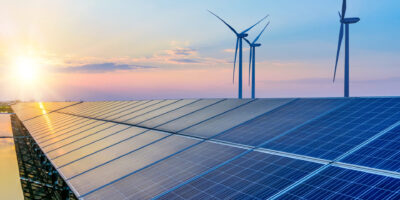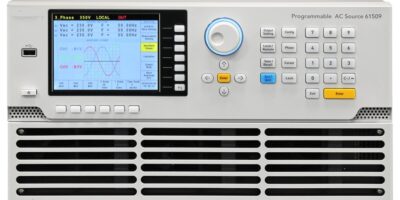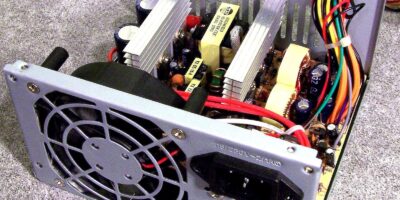The Submersible Pressure Sensors Market is expected to grow at a CAGR of 9.9% during the forecasted period 2023-2032
Overview of the Submersible Pressure Sensors Market
1. Introduction to Submersible Pressure Sensors
1.1 What Are Submersible Pressure Sensors?
Submersible pressure sensors are specialized devices designed to measure pressure in underwater environments. They are engineered to withstand immersion in liquids, often in harsh and deep-water conditions, making them essential for applications requiring precise pressure measurement beneath the surface of water or other liquids.
These sensors convert pressure data into electrical signals, providing accurate readings that are critical for monitoring and controlling various processes in industries such as oil and gas, water management, marine research, and environmental monitoring.
1.2 Importance of Submersible Pressure Sensors
The accurate measurement of pressure in underwater environments is crucial for:
- Operational Efficiency: Ensuring optimal performance of pumps, pipelines, and underwater equipment.
- Safety: Monitoring conditions to prevent leaks, overpressure situations, and potential failures.
- Data Collection: Gathering vital data for scientific research, environmental monitoring, and resource management.
- Regulatory Compliance: Meeting industry standards and regulations for environmental and operational safety.
2. How Submersible Pressure Sensors Work
2.1 Basic Working Principle
Submersible pressure sensors typically operate based on one of the following principles:
- Piezoresistive: Utilize a diaphragm and piezoresistive elements to measure pressure changes.
- Capacitive: Measure pressure-induced changes in capacitance between two surfaces.
- Strain Gauge: Employ strain gauges attached to a diaphragm that deform under pressure, altering the electrical resistance.
- Resonant: Use a vibrating element whose frequency changes in response to pressure variations.
Key Components:
- Diaphragm: The part of the sensor that deforms under pressure.
- Sensing Element: Converts the deformation or pressure into an electrical signal.
- Housing: Encases the sensor to protect it from water and environmental conditions.
- Cable: Transmits the electrical signal to the data acquisition system.
2.2 Operational Steps
- Pressure Application: Pressure from the liquid medium exerts force on the diaphragm.
- Signal Generation: The sensing element detects the deformation or pressure change and generates a corresponding electrical signal.
- Signal Processing: The signal is processed to convert it into readable data.
- Output Transmission: The processed data is transmitted to a monitoring system or control unit for analysis and use.
3. Historic Developments in Submersible Pressure Sensors
3.1 Early Innovations
- Mid-20th Century: Introduction of basic pressure sensors for industrial applications.
- 1960s-1970s: Development of more robust sensors capable of withstanding underwater conditions, primarily for the oil and gas industry.
3.2 Key Milestones
- 1980s: Advancements in piezoresistive and capacitive technologies, leading to more accurate and reliable sensors.
- 1990s: Emergence of digital sensors with integrated signal processing capabilities.
- 2000s: Development of compact, high-precision sensors for use in a broader range of applications, including environmental monitoring and underwater exploration.
3.3 Recent Innovations
- Smart Sensors: Incorporation of digital interfaces and data logging for enhanced functionality and ease of integration.
- Miniaturization: Development of smaller, more efficient sensors suitable for compact or hard-to-reach installations.
- Wireless Capabilities: Introduction of wireless communication for remote monitoring and data transmission.
4. Why Purchase the Submersible Pressure Sensors Market Report?
4.1 Comprehensive Market Insights
- Market Analysis: Detailed analysis of market trends, size, and growth potential.
- Competitive Landscape: Insights into key players, their strategies, and market positions.
- Segmentation Analysis: Breakdown of the market by application, technology, end-user, and geography.
4.2 Technological Trends and Innovations
- Emerging Technologies: Exploration of new and emerging technologies in submersible pressure sensors.
- Product Developments: Information on the latest product launches, improvements, and innovations.
- Future Trends: Predictions on upcoming trends and technological advancements shaping the market.
4.3 Strategic Decision-Making
- Investment Opportunities: Identification of potential investment opportunities within the market.
- Market Forecasts: Reliable forecasts to assist in strategic planning and decision-making.
- Risk Assessment: Analysis of potential risks and challenges in the market.
4.4 Competitive Intelligence
- Company Profiles: Detailed profiles of leading companies, including their financial performance, product portfolios, and strategies.
- Market Share Analysis: Evaluation of the market share of major players and their competitive dynamics.
- Benchmarking: Comparison of products, services, and technologies across different market players.
4.5 Market Entry and Expansion
- Entry Strategies: Recommendations for new entrants looking to enter the market.
- Expansion Opportunities: Guidance on potential areas for business expansion and market penetration.
- Regulatory Insights: Information on regulatory requirements and compliance standards relevant to the market.
4.6 Customer and Market Trends
- Consumer Behavior: Insights into customer preferences and behaviors affecting the market.
- Demand Drivers: Analysis of factors driving demand in different applications and regions.
- Feedback and Satisfaction: Evaluation of customer satisfaction and feedback on current products and technologies.
Receive the FREE Sample Report of Submersible Pressure Sensors Market Research Insights @ https://stringentdatalytics.com/sample-request/submersible-pressure-sensors-market/10743/
Market Segmentations:
Global Submersible Pressure Sensors Market: By Company
• WIKA
• Gems Sensors & Controls
• LORD Corporation
• Transducers Direct
• OMEGA
• Automation Products Group
• TE Connectivity
• KOBOLD
• Xi’an Chinastar M & C
• Jinggoal International
• Dylix Corporation
• Setra Systems
Global Submersible Pressure Sensors Market: By Type
• For Level Measurment
• For Superior Applications
Global Submersible Pressure Sensors Market: By Application
• Water & Wastewater
• Oil & Gas
• Chemical Industry
• Dairy & Pharmaceutical
• Marine
• Others
Regional Analysis of Global Submersible Pressure Sensors Market
All the regional segmentation has been studied based on recent and future trends, and the market is forecasted throughout the prediction period. The countries covered in the regional analysis of the Global Submersible Pressure Sensors market report are U.S., Canada, and Mexico in North America, Germany, France, U.K., Russia, Italy, Spain, Turkey, Netherlands, Switzerland, Belgium, and Rest of Europe in Europe, Singapore, Malaysia, Australia, Thailand, Indonesia, Philippines, China, Japan, India, South Korea, Rest of Asia-Pacific (APAC) in the Asia-Pacific (APAC), Saudi Arabia, U.A.E, South Africa, Egypt, Israel, Rest of Middle East and Africa (MEA) as a part of Middle East and Africa (MEA), and Argentina, Brazil, and Rest of South America as part of South America.
Click to Purchase Submersible Pressure Sensors Market Research Report @ https://stringentdatalytics.com/purchase/submersible-pressure-sensors-market/10743/
Submersible Pressure Sensors Market: Strategies and Demand Analysis
1. Market Strategies for Submersible Pressure Sensors
The market for submersible pressure sensors is characterized by a blend of technological innovation, application-specific solutions, and strategic partnerships. To thrive in this competitive and evolving market, companies must adopt a multifaceted approach. Here are the key strategies shaping the submersible pressure sensors market:
1.1 Technological Innovation
1.1.1 Advancements in Sensor Technology
- Miniaturization: Developing smaller, more compact sensors that can be deployed in constrained or complex underwater environments.
- Enhanced Accuracy: Improving sensor sensitivity and resolution to provide more precise pressure readings, crucial for applications requiring high accuracy.
- Material Improvements: Utilizing advanced materials to enhance sensor durability and resistance to harsh underwater conditions, such as saltwater corrosion or extreme pressures.
1.1.2 Integration of Smart Features
- Digital Output: Incorporating digital interfaces for easier integration with modern data acquisition and control systems.
- Self-Diagnostics: Adding features for real-time monitoring and diagnostics to predict sensor failures and maintenance needs.
- Wireless Capabilities: Developing sensors with wireless communication capabilities to enable remote monitoring and reduce wiring complexities.
1.2 Customization and Application-Specific Solutions
1.2.1 Tailored Designs
- Industry-Specific Adaptations: Designing sensors specifically suited to different industry needs, such as oil and gas, marine research, or water management.
- Environmental Adaptations: Customizing sensors to operate effectively in diverse underwater environments, including deep-sea and freshwater conditions.
1.2.2 Modular Approaches
- Interchangeable Components: Creating modular sensors with interchangeable components for different measurement ranges and environmental conditions.
- Flexible Configurations: Offering sensors with flexible configurations to meet varied customer requirements and integration needs.
1.3 Strategic Partnerships and Collaborations
1.3.1 Industry Partnerships
- Collaboration with OEMs: Partnering with Original Equipment Manufacturers (OEMs) to integrate submersible pressure sensors into broader systems and solutions.
- Academic and Research Collaborations: Engaging in research partnerships to explore new technologies and applications, particularly in emerging fields like underwater robotics and environmental monitoring.
1.3.2 Supply Chain Optimization
- Sourcing Strategies: Optimizing the supply chain to reduce costs and ensure a steady supply of high-quality components.
- Distribution Networks: Establishing strong distribution networks to expand market reach and improve customer access to products.
1.4 Market Expansion and Penetration
1.4.1 Geographic Expansion
- Emerging Markets: Targeting emerging markets with growing industrial and environmental monitoring needs, such as Asia-Pacific and Latin America.
- Localized Solutions: Developing localized solutions that cater to the specific needs and regulatory requirements of different regions.
1.4.2 Product Line Diversification
- New Product Launches: Introducing new products that address gaps in the market or offer unique features and benefits.
- Complementary Technologies: Expanding into complementary technologies, such as submersible temperature sensors or integrated sensor systems.
1.5 Marketing and Branding
1.5.1 Brand Positioning
- Quality Emphasis: Positioning products as high-quality, reliable solutions for demanding underwater applications.
- Technological Leadership: Highlighting technological innovations and industry expertise to build brand authority.
1.5.2 Customer Engagement
- Education and Training: Providing training and educational resources to help customers understand and effectively use submersible pressure sensors.
- Customer Support: Offering robust customer support and service to build long-term relationships and enhance customer satisfaction.
2. Demand Analysis for Submersible Pressure Sensors
The demand for submersible pressure sensors is driven by several factors, reflecting their critical role in a wide range of applications and industries. Here’s an overview of the key demand drivers:
2.1 Increasing Industrial Applications
2.1.1 Oil and Gas Industry
- Subsea Exploration: Rising exploration and production activities in offshore oil and gas fields necessitate reliable pressure measurement solutions.
- Pipeline Monitoring: Monitoring subsea pipelines for pressure changes to detect leaks and ensure operational integrity.
2.1.2 Water and Wastewater Management
- Water Quality Monitoring: Measuring pressure to monitor water levels in reservoirs, tanks, and distribution systems.
- Flood Prevention: Using sensors in flood control systems to monitor water pressure and prevent overflow or breaches.
2.2 Growth in Marine and Environmental Research
2.2.1 Oceanography and Marine Biology
- Deep-Sea Exploration: Increased research activities in deep-sea environments drive the need for sensors that can withstand extreme depths and pressures.
- Environmental Monitoring: Monitoring underwater ecosystems and assessing the impact of environmental changes on marine life.
2.2.2 Climate Research
- Sea Level Monitoring: Measuring pressure to monitor changes in sea level and analyze climate change impacts.
- Glacier and Ice Cap Studies: Using sensors to study underwater pressure changes related to melting glaciers and ice caps.
2.3 Emerging Technologies and Innovations
2.3.1 Underwater Robotics
- Autonomous Underwater Vehicles (AUVs): Growing use of AUVs and remotely operated vehicles (ROVs) in underwater exploration and inspection requires precise pressure sensors.
- Underwater Drones: Development of underwater drones for commercial and research purposes drives demand for compact and accurate pressure sensors.
2.3.2 Smart Water Management
- Smart Infrastructure: Integration of submersible pressure sensors in smart water management systems for real-time monitoring and control.
- IoT Applications: Use of Internet of Things (IoT) technology to connect sensors for data collection, analysis, and remote monitoring.
2.4 Regulatory and Environmental Compliance
2.4.1 Regulatory Requirements
- Environmental Regulations: Increasing environmental regulations related to water quality and management drive the adoption of pressure sensors for compliance monitoring.
- Safety Standards: Industry safety standards for offshore operations and underwater construction necessitate reliable pressure measurement.
2.4.2 Disaster Prevention and Management
- Flood Risk Management: Government initiatives for flood risk management and disaster prevention boost demand for pressure sensors in monitoring systems.
- Infrastructure Safety: Ensuring the safety and reliability of underwater infrastructure through continuous pressure monitoring.
About Stringent Datalytics
Stringent Datalytics offers both custom and syndicated market research reports. Custom market research reports are tailored to a specific client’s needs and requirements. These reports provide unique insights into a particular industry or market segment and can help businesses make informed decisions about their strategies and operations.
Syndicated market research reports, on the other hand, are pre-existing reports that are available for purchase by multiple clients. These reports are often produced on a regular basis, such as annually or quarterly, and cover a broad range of industries and market segments. Syndicated reports provide clients with insights into industry trends, market sizes, and competitive landscapes. By offering both custom and syndicated reports, Stringent Datalytics can provide clients with a range of market research solutions that can be customized to their specific needs.
Reach US
Stringent Datalytics
+1 346 666 6655
Social Channels:
Linkedin | Facebook | Twitter | YouTube




Leave a Reply